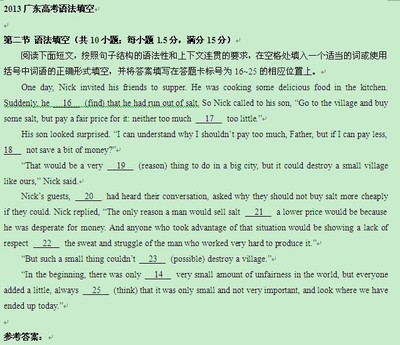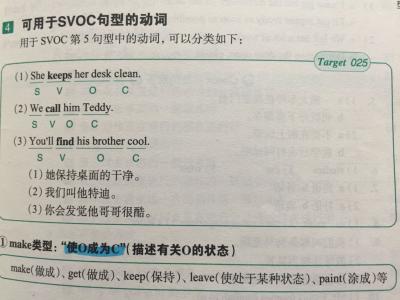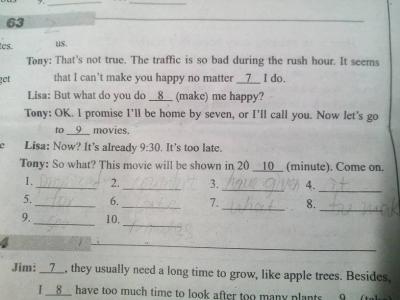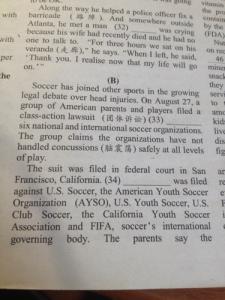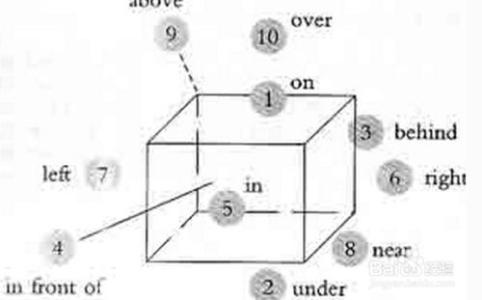素材来源/网络 编辑制作/荷花小女子
一、冠词冠词分为不定冠词(a, an),定冠词(the),和零冠词。
I. 不定冠词的用法
1
指一类人或事,相当于a kind of
A plane is a machine that can fly.
2
第一次提及某人某物,非特指
A boy is waiting for you.有个男孩在等你。
3
表示“每一”相当于every,one
We study eight hours a day.
4
表示“相同”相当于the same
We are nearly of an age.
5
用于人名前,表示不认识此人或与某名人有类似性质的人或事
— Hello, could I speak to Mr. Smith?
—Sorry, wrong number. There isn't______ Mr. Smith here.
A. 不填 B. a C. the D. one
That boy is rather a Lei Feng.(活雷锋)
6
用于固定词组中
a couple of, a bit, once upon a time, in a hurry, have a walk, many a time
7
用于quite, rather, many, half, what, such之后
This room is rather a big one.
8
用于so(as, too, how)+形容词之后
She is as clever a girl as you can wish to meet.
9
用于抽象名词具体化的名词前
success(抽象名词)→a success(具体化) 成功的人或事
a failure 失败的人或事 a shame 带来耻辱的人或事
a pity 可惜或遗憾的事 a must 必需必备的事
a good knowledge of 精通掌握某一方面的知识
II. 定冠词的用法
1
表示某一类人或物
In many places in China, ___ bicycle is still ___ popular means of transportation.
A. a; the B. /; a C. the; a D. the; the
2
用于世上独一无二的事物名词前
the universe, the moon, the Pacific Ocean
3
表示说话双方都了解的或上文提到过的人或事
Would you mind opening the door?
4
用于演奏乐器
play the violin, play the guitar
5
用于形容词和分词前表示一类人
the reach, the living, the wounded
6
表示“一家人”或“夫妇”(对比上文的不定冠词用法5)
—Could you tell me the way to ____ Johnsons, please?
—Sorry, we don’t have ____ Johnson here in the village.
A. the; the B. the; a C. /; the D. the; /
7
用于序数词和形容词副词比较级最高级前
He is the taller of the two children.
8
用于国家党派等以及江河湖海,山川群岛的名词前
the United States, the Communist Party of China, the French
9
用于表示发明物的单数名词前
The compass was invented in China.
10
在逢十的复数数词之前,指世纪的某个年代
in the 1990’s(二十世纪九十年代)
11
用于表示度量单位的名词前
I hired the car by the hour.
12
用于方位名词,身体部位名词
He patted me on the shoulder.
III. 不用冠词(又名零冠词)的用法
1
专有名词,物质名词,抽象名词,人名地名等名词前
Beijing University, Jack, China, love, air
2
名词前有this, my, whose, some, no, each, every等限制
I want this book, not that one. / Whose purse is this?
3
季节,月份,星期,节假日,一日三餐前
March, Sunday, National Day, spring
4
表示职位,身份,头衔的名词前
Lincoln was made President of America.
5
表示球类,棋类等运动的名词前
He likes playing football/chess.
6
与by连用表示交通方式的名词前
We went right round to the west coast by ______ sea instead of driving across ______ continent.
A. the; the B.不填;the C. the; 不填 D. 不填;不填
7
以and连接的两个相对的名词并用时
husband and wife, knife and fork, day and night
8
表示泛指的复数名词前
Horses are useful animals.
二、名词和主谓一致
I. 名词的种类
专有名词
普通名词
国名地名人名,团体机构名称
可数名词
不可数名词
个体名词
集体名词
抽象名词
物质名词
特别注意名词类别的相互转换
个体名词与抽象名词的相互转换
例 句
意 义
名词性质
①She held some flowers in her hand.
②The trees are now in flower
花儿
个体名词
开花
抽象名词
①Youth is beautiful.
②He is a youth of twenty
青春
抽象名词
年轻人
个体名词
①They have achieved remarkable success in their work.
②—How about the Christmas evening party?
—I should say it was a success.
成功
抽象名词
成功的事
个体名词
物质名词与个体名词的相互转换
例 句
意 义
名词性质
①Iron is a kind of metal.
②Please lend me your iron.
铁
物质名词
熨斗
个体名词
①He broke a piece of glass.
②He broke a glass.
玻璃
物质名词
玻璃杯
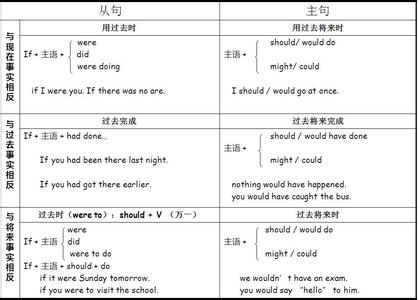
个体名词
①I bought a chicken this morning
②Please help yourself to some chicken
小鸡
个体名词
鸡肉
物质名词
抽象名词与个体名词的转换
具有动作意义的抽象名词加用与某些动词(如:have等)连
用,表示某一次短暂的动作
①—I’d like______information about the management of your hotel,please.
—Well, you could have____word with the manager. He might be helpful
A.some,a B.an,some C.some,some D.an,a
②They sent us word of the latest happenings. 消息 (抽象名词)
A.a B.an C./ D.the
③Could we have word before you go to the meeting? 话(个体名词)
A.a B.an C./ D.the
类例:have a dream/a rest/a smoke/a swim/a trip/a wash/a discussion/a look
take a walk/a bath make an advance(进步)/make an early start(早点出发)
/make a decision/make a change/give a cry of pain(发出痛苦的叫声) /give a try
表示知识和时间的抽象名词转换为普通名词时可以用来表示
其中的一部分
①Many people agree that___knowledge of English is a must in____international trade today.
A.a, / B.the, an C.the, the D. /, the
a knowledge of truth(知道实际情况)
give a fuller knowledge of China(提供关于中国更为翔实的知识)
have a knowledge of shorthand(有速记的知识)
②If there were no examination, we should have______at school.
A.the happiest time B.a more happier time
C.much happiest time D.a much happier time
③ is money.
A.The time B.A time C.Time D.Times
抽象名词转换为普通名词可用来表示“一次、一阵、一种”具体的行为、事件、现象或结
果。这时名词前往往有形容词修饰
①Oh, John. _____you gave me!
A.How a pleasant surprise B.How pleasant surprise
C.What a pleasant surprise D. What pleasant surprise
②She looked up when I shouted.
A.in a surprise B.in the surprise C.in surprise D.in some surprise
其它例子:The gift came as a complete surprise to me. We have had some unpleasant surprise
③It is_____work of art that everyone wants to have a look at it.
A.so unusual B. such unusual C.such an unusual D.so an unusual
II. 名词的数
规则名词的复数形式:名词的复数形式,一般在单数形式后面加-s或-es(参看有关语法书)。英语里有些名词的复数形式是不规则的,请看下表
规 则
例 词
1
改变名词中的元音字母或其他形式
man-men, woman-women, foot-feet, goose-geese, mouse-mice
2
单复数相同
sheep, deer, series, means, works, fish, species
3
只有复数形式
ashes, trousers, clothes, thanks, goods, glasses, compasses, contents
4
一些集体名词总是用作复数
people, police, cattle, staff
5
部分集体名词既可以作单数(整体)也可以作复数(成员)
audience, class, family, crowd, couple, group, committee, government, population, crew, team, public, enemy, party
6
复数形式表示特别含义
customs(海关), forces(军队), times(时代), spirits(情绪), drinks(饮料), sands(沙滩), papers(文件报纸), manners(礼貌), looks(外表), brains(头脑智力), greens(青菜), ruins(废墟)
7
表示“某国人”
加-s
Americans, Australians, Germans, Greeks, Swedes, Europeans
单复数同形
Swiss, Portuguese, Chinese, Japanese
以-man或-woman结尾的改为-men,-women
Englishmen, Frenchwomen
8
合成名词
将主体名词变为复数
sons-in-law, lookers-on, passers-by, story-tellers, boy friends
无主体名词时将最后一部分变为复数
grown-ups, housewives, stopwatches
将两部分变为复数
women singers, men servants
III. 主谓一致
规则
情 况
举 例
语
法
一
致
原
则
以单数名词或代词动词不定式短语,动名词短语或从句作主语时,谓语动词一般用单数形式;主语为复数时,谓语动词
用复数形式。
His father is working on the farm.
To study English well is not easy.
Reading in the sun is bad for your eyes.
What he said is very important for us all.
由what引导的主语从句,后面的谓语动词多数情况用单数形式,但若表语是复数或what从句是一个带有复数意义的并列结构时,主句的谓语动词用复数形式。
what I bought were three English books.
What I say and do is (are) helpful for you.
由连接词and或both…and连接起来的主语后面,要用复数形式的谓语动词。但若所连接的两个词是指同一个人或物
时,它后面的谓语就用单数形式。由and 连接的并列单数主语前如果分别有no, each, every 或more than a (an)/one,many a (an) 修饰时,其谓语动词要用单数形式。either, neither, each, every 或no+单数名词和由some, any no, every构成的复合不定代词,都作单数看待。.
Lucy and Lily are twins
The writer and artist has come.
Every student and every teach is in the classroom.
Many a boy and many a girl likes it.
No boy and no girl likes it.
Each of us has a new book. Is everyone here today?
Somebody is speaking in class. Everything around us is matter
若none of 后面的名词是不可数名词,它的谓语动词就要用单数。若它后面的名词是复数,它的谓语动词用单数或复数都可以。
None of the sugar was left.
None of us has (have) been to America.
在定语从句里,关系代词that, who, which 等作主语时,其谓语动词的数应与句中先行词的数一致。
Those who want to go please write their names on the blackboard.
He is one of my friends who are working hard.
He is the (only) one of my friends who is working hard.
在强调句型中应与被强调部分一致
It is I who am going to the cinema tonight.
It is we who are going to the cinema tonight.
如果集体名词指的是整个集体,它的谓语动词用单数形式; 如果它指的集体的成员,其谓语动词用复数形式
The police are looking for the lost child.
The cattle are eating grass in the field.
His family has moved to the south .(他的一家)
His family are watching TV.(他的家人)
Class four is on the third floor.(四班)
Class Four are unable to agree upon a monitor.(四班的学生)
由a lot of /lots of/ plenty of/ a heap of/ heaps of/ the rest of/the majority of+名词构成的短语以及由分数或百分数+名词构成的短语作主语时,其谓语动词的数要根据短语中后面名词的数而定。
There are a lot of people in the classroom.
Three-fourths of the surface of the earth is sea.
50 percent of the students in our class are girls.
此外,还有a number of +复数名词有类似的用法(用复数),但the number of +复数名词的数就得依number 而定(用单数)。
A number of students have gone to the farm to help the farmer pick apples.
The number of pages in this book is three hundred.
在倒装句中,谓语动词的数应与其后的主语一致
There comes the bus. On the wall are many pictures.
Such is the result. Such are the facts.
Between the two hills stands a monument.
逻
辑
意
义
一
致
原
则
What, who, which, any, more, all 等代词可以是单数,也可是复数, 主要靠意思来决定。
Which is your bag? Which are your bags?
Are any of you good at English? Has any of you got a pen?
All can be done has been done. All is going well.
All have been taken out. All have gone to Beijing.
表示时间重量长度价值等的名词的复数作主语时,谓语动词通常用单数形式,这是由于作主语的名词在概念上是一个整体。
Thirty minutes is enough for the work..
Twenty pounds is too dear.
如强调这类词的复数意义,则谓语动词要用复数形式
Forty kilos of water are used every day.
若英语是书名名格言剧名报名国名等的复数形式,其谓语动词通常用单数形式。
The United States is smaller than China.
“The Arabian Nights” is an interesting story-book.
表数量的短语“one and a half”后面接复数名词作主语时,其谓语动词要用单数形式。
One and a half apples is left on the table.
一些学科名词是以-ics结尾,如:mathematics, politics, physics 以及news, works 等。都属于形式上是复数的名词, 实际意义为单数名词,
它们作主语时,其谓语动词要用单数形式。
The paper works was built in 1990.这家造纸厂建于1990年。
I don’t think physics is easy to study.
trousers, glasses, clothes, shoes, scissors (剪刀)等词作主语时,谓语用复数,但如果这些名词前有a(the) pair of 等量词修饰时(clothes被a suit of 修饰)谓语动词用单数。
My glasses are broken.
The pair of shoes under the bed is his.
“定冠词the+形容词或分词”,表示某一类人动词用复数;若表示某一类东西时,动词用单数。
The old are taken good care of there.
The beautiful gives pleasure to all.
就
近
/远
一
致
原
则
当两个主语由either or, neither nor, not only but also ,whether or 连接时,谓语动词和邻近的主语保持一致,即就近一致。
Either the teacher or the students are our friends.
Neither he nor they are wholly right.
Neither they nor he is wholly right.
Is neither he nor they wholly right?
there be 句型中be 动词的单复数取决于其后的主语。如果其后是由and 连接的两个主语,则应与靠近的那个主语保持一致,即就近一致。
There are two chairs and a desk in the room.
There is a desk and two chairs in the room.
主语后面跟有with, together with, except, but, like, as well as, no less than, rather than, more than, besides, along with, including, in addition to 等引起的短语, 谓语动词要跟主语一致,即就远一致。
Mr. Green, together with his wife and children, has come to China.
A woman with a baby was on the bus.
Nobody but Jim and Mike was on the playground.
She, like you and Tom, is very tall.
The girls as well as the boy have learned to speak Japanese.
No one except my teachers knows anything about it.
三、代词
I. 代词可以分为以下八大类
1
人称代词
主格
I, you, he, she, it, we, you, they
宾格
me, you, him, her, it, us, you, them
形容词性物主代词
my, your, his, her, its, our, their
名词性物主代词
mine, yours, his, hers, its, ours, theirs
2
反身代词
myself, yourself, himself, herself, itself, ourselves, yourselves, themselves
3
指示代词
this, that, these, those, such, some
4
疑问代词
who, whom, whose, which, what, whoever, whichever, whatever
5
关系代词/连接代词
that, which, who, whom, whose, as
6
不定代词
one/ some/ any, each/ every, none/ no, many/ much, few/ little/ a few/ a little
other/ another, all/ both, neither/ either
7
相互代词
each other,one another
II. 不定代词用法注意点
类 别
区 别
例 句
one, some,
any和it
one可以泛指人或者事(东西),其复数为ones
①We’ve been looking at the houses but haven’t found ___ we like yet.
A.one B.ones C.it D.them
②Cars do cause us some health problems — in fact far more serious _______ than mobile phones do.
A.one B.ones C.it D.those
some可用于疑问句中,表示盼望得到肯定的答复,或者表示建议,请求等
—Your coffee smells great! —It’s from Mexico.Would you like ________?
A.it B.some C.this D.1ittle
some 和any修饰可数名词单数时,some表示某个,any表示任何一个
①I have read this article in some magazine. Please correct the mistakes, if any.
②—Which of the three ways shall I take to the village?
—________way as you please.
A.Each B.Every C.Any D.Either
one指同类中的一个,it指代同一种类的东西。此外it还可以作形式主语、形式宾语和用于强调句型中。
—There is still a copy of the book in the library. Will you go and borrow ?
—No, I’d rather buy in the bookstore.
A.it;one B.one;one C.one;it D.it;it
some多用于肯定句,any多用于疑问句和否定句
①There’s ________cooking oil in the house. Would you go to the corner store and get ________.
A.1ittle,some B.1ittle,any C.a little,some D.a little,any
②We had three sets of garden tools and we seemed to have no use for ________.
A.none B.either C.any D.each
③He doesn’t have _________ furniture in his room --just an old desk.
A. any B. many C. some D. much
each和every
each强调个别,代表的数可以是两个或两个以上,而every强调整体,所指的数必须是三个或三个以上
①Each student has a pocket dictionary.
Each (of us) has a dictionary. = We each have a dictionary.
②Every student has strong and weak points. / Every one of us has strong and weak points.
none和no
no等于not any,作定语。none作主语或宾语,代替不可数名词,谓语用单数,代替可数名词,谓语单复数皆可以
①There is no water in the bottle.
②How much water is there in the bottle? None.
③None of the students are (is) afraid of difficulties.
other和another
other泛指“另外的,别的”常与其他
词连用,如:the other day, every other
week, someother reason, no other way,
the other特指两者中的另外一个,复数为the others
①Both sides have accused of breaking the contract.
A. another B. the other C. neither D. each
②Two students in our class failed, but all the others passed the exam.
another指“又一个,另一个”无所指,
复数形式是others,泛指“别的人或
事”
①We had a picnic last term and it was a lot of fun,so let’s have ______ one this month.
A.the other B.some C.another D.other
②The trousers are too long, please give me another pair / some others.
③Some like football, while others like basketball.
either和neither
前者意思为:两者都(两者中任何一方都);后者意思为:两者都
①—Do you want tea or coffee? — ______, I really don't mind.
A. none B. neither C. either D. all
②It was hard for him to learn English in a family, in which _____ of the parents spoke the language.
A. none B. neither C. both D. each
四、形容词和副词
I. 形容词
1.形容词的位置:形容词作定语通常前置,但在下列情况下后置
1
修饰some, any, every, no和body, thing, one等构成的复合不定代词时
nobody absent, everything possible
2
以-able, -ible结尾的形容词可置于有最高级或only修饰的名词之后
the best book available, the only solution possible
3
alive, alike, awake, aware, asleep等作定语时后置
the only person awake
4
和空间、时间、单位连用时
a bridge 50 meters long
5
成对的形容词可以后置
a huge room simple and beautiful
6
形容词短语一般后置
a man difficult to get on with
7
enough修饰名词时可以前置也可以后置,但修饰形容词或副词时要后置
______to take his adventure course will certainly learn a
lot of useful skills.(NMET2000)
A.Brave enough students B.Enough breave students
C.Students brave enough D.Students enough brave
注意:多个形容词修饰同一个名词的顺序
熟记口诀就可以顺利解题:限定描绘大长高,形状年龄和新老,颜色国籍跟材料,作用类别往后靠。
规则:限定语(The、A)+ 描绘性形容词 + size(小)+ shape(形状)+ age(年龄、时间)+ color(颜色)+ origin(国籍、来源)+ material(材料)+ purpose(目的)+ 名词。
▲This ________ girl is Linda’s cousin. (05北京卷)
A. pretty little Spanish B. Spanish little pretty C. Spanish pretty little D. little pretty Spanish
2.复合形容词的构成
1
形容词+名词+ed
kind-hearted
6
名词+形容词
world-famous
2
形容词+形容词
dark-blue
7
名词+现在分词
peace-loving
3
形容词+现在分词
ordinary-looking
8
名词+过去分词
snow-covered
4
副词+现在分词
hard-working
9
数词+名词+ed
three-egged
5
副词+过去分词
newly-built
10
数词+名词
twenty-year
3.形容词(短语)作伴随状语
As he looked at the goat, it rolled over, dead. 当他看着山羊的时候,山羊翻了个身,死了。
Afraid of difficulties, they prefer to take the easy road.由于害怕困难,他们宁愿走好走的路。
II.副词的分类:
1
时间副词
soon, now, early, finally, once, recently
5
频度副词
always, often, frequently, seldom, never
2
地点副词
here, nearby, outside, upwards, above
6
疑问副词
how, where, when, why
3
方式副词
hard, well, fast, slowly, excitedly, really
7
连接副词
how, when, where, why, whether, however, meanwhile
4
程度副词
almost, nearly, very, fairly, quite, rather
8
关系副词
when, where, why
III. 形容词和副词的比较等级
形容词和副词的比较等级分为原级,比较级和最高级。比较级和最高级的构成一般是在形容词和副词后加-er和-est,多音节和一些双音节词前加more 和most。
项 目
例 句
同级比较时常常用 as…as…以及not so(as)…as…
She is as tall as her mother.
I am not as/ so good a player as you are.
双方比较,表示一方超过另一方时,用“比较级 (+ than)”
的结构表示。要注意题干中将比较的另一方阴藏起来的情况。
This picture is more beautiful than that one.
I have never seen such a more interesting film (than this one).
表示一方不及另一方时,用“less + 原级 + than”的结构表示
This room is less beautiful than that one.
表示一方随另一方变化时用“the more…the more…”句型
The harder you work, the more progress you will make
用比较级来表达最高级的意思
I have never spent a more worrying day.
我从来没有度过这样令人烦恼的一天。
(意为:我度过了最为令人烦恼的一天。)
倍数的表达
表达法一:A is three(four, etc.)times the size(height, length etc.)of B.
The new building is four times the size(the height)of the old one.
这座新楼是那座旧楼的四倍大(高)/这座新楼比那座旧楼大(高)三倍。
表达法二:A is three(four, etc.)times as big(high, long, etc.)as B.
Asia is four times as large as Europe.
亚洲是欧洲的四倍大/亚洲比欧洲大三倍。
表达法三:A is three (four, etc.)times bigger(higher, longer, etc.)than B.
Your school is three times bigger than ours.
你们的学校比我们的学校大三倍。
用times 表倍数通常用于三倍以上,两倍可以用twice或double.
注意:1. 可以修饰比较级的词有:much, many, a lot, even, far, a bit, a little, still, yet, by far, any, a great deal;
2. 表示“最高程度“的形容词没有最高级和比较级。如:favourite, excellent, extreme, perfect,superior,junior等。
五、动词和短语动词
知识网络
动词的分类
行为动词(实义动词)
①及物动词(带宾语):study, develop;
②不及物动词(不带宾语)work, swim, go, come
③状态动词(相对静止)contain, exist, own, prefer, belong
④动作动词:延续性(work, stay);非延续性(marry, go, come)
连系动词(汉语中没有这种词类)
助动词(与动词原形或分词构成复合谓语)
be(am,is,are),do(does,did);have(has);will,would,shall
情态动词
can(could),may(might),must,shall(should)
短语动词常见的构成方式及其注意点
动词+副词所构成的短语动词分及物的和不及物的两类
Please turn every light in the house off. 请把房子里的每一盏灯都关掉。(及物)
Harry turned up after the party when everyone had left.
晚会后,人们都已离去,哈里出现了。(不及物)
注意:
①如果宾语较长,就应避免把副词同动词分开
She turned off all the lights which had been left on. 她关掉了所有还在亮着的灯。
②如果宾语是人称代词,只能放在动词和副词之间
She gave them away.她送掉了它们。
③同一动词和不同副词搭配时,意义上有很大的差异
ring back回电话 ring off挂断电话 ring up打电话
put away放好 put on穿,上演 put up挂起,举起。
④不同动词和同一副词搭配时,在意义上有很大的差异
break out发生,爆炸 carry out进行,开展 go out熄灭
hand out分发 let out放出 look out当心
sell out卖完 set out出发, take out取出
work out算出
动词+介词(及物)
I'm looking for my glasses. 我在找我的眼镜。
注意:①当它跟宾语时,不能把介词放在宾语后面。
②同一动词和不同介词搭配时,意义上有很大的差异。
look after照料,look at看,look for寻找
动词+副词+介词
I look forward to seeing you soon. 我盼望不久就见到你。
注:“动词+介词”、“动词+名词+副词”、“动词+副词+介词”,这三种搭配都是及物的,如变成被动语态,不可漏掉介词。In this way both grain and vegetable can be well looked after. (不能漏掉after) 这样一来,粮食和蔬菜都能兼顾了。
考点聚焦及解题点拨
(单个动词)同义词近义词辨析
从三个方面考虑:词的恰切含义、搭配(与介词、名词或非谓语动词的搭配)和用法(是及物动词还是不及物动词)
系动词的用法
状态系动词be
持续系动词keep,remain,stay,continue,lie,stand,rest
表象系动词seem,appear
感官/感觉系动词look,smell,taste,sound,feel
变化系动词become,grow,get,turn,fall,go,come
终止系动词prove,turn out
解答这类试题的关键首先是弄清题意,然后是分析句子结构,由此可判断出该动词是否用作系动词,最后确定所要填入的答案。特别关注:go hungry,come true,turn writer
接双宾语的动词
give sb. sth=give sth.to sb buy sb. sth.=buy sth. for sb
但是我们只能说:suggest sth. to sb. explain sth.to sb. read sth. to sb.
短语动词的辨析
熟记常考的短语动词的意义
容易被我们忽视的知识点
sell, write, wash, wear等词的主动形式后跟副词表示被动意义
happen, occur,take place, break out, come out, belong to等无被动形式
六、动词的时态和语态
1. 常用常考的动词时态和用法:(以do为例)
名称
构成
用法
一般现在时
do/does,( 连系动词is/am/are )
1.一般现在时表示经常发生、习惯性动作、客观真理、科学事实、格言,目前的特征、状态、能力等。
2.主句是一般将来时,时间、条件状语从句中用一般现在时表示将来。
I’ll go there after I finish my work.
If it rains tomorrow,I won’t go there.
3.在以here,there开头的句子里,go,come等少数动词的一般在时表示正在发生的动作。
There goes the bell.铃响了。
There comes the bus.汽车来了。
Here she comes.她来了。
一般过去时
did,( 连系动词was/were)
表达特定的过去时间内发生的动作或存在的状况,或过去某一时间内经常发生或反复发生的动作或行为。
现在进行时
is/am/are doing
1.表示正在进行的动作。
2.表示按计划安排即将发生的动作。
She is leaving for Beijing.她要去北京。
He is working as a teacher tomorrow.
从明天起他要做老师。
My father is coming to see me this Saturday.
这个星期六我爸爸要来看我。
3.代替一般现在时,描绘更加生动。
The Changjiang River is flowing into the east.
长江江水滚滚向东流。
The sun is rising in the east.太阳从东方冉冉升起。
过去进行时
was/were doing
1.表示过去某一时刻或某一段时间内正在进行的动作(这一过去时间须用时间状语表示)
He was preparing his lecture all day yesterday.
2.表示动作在另一过去动作发生时进行
They were still working when I left.
3.用在两个过去进行时动作同时发生
I was writing while he was watching TV.
4.表示过去将来动作
He said she was arriving the next day.
现在完成时
has/have done
1.表示过去发生的动作对现在产生的影响或结果,说话时已
完成的动作。
I have finished the report./ She has cleand the room.
2.表示从过去开始,待续到现在的动作或状态,往往
和“for...”, “since...”表述的一段时间状语连用。
He has learned English for six years.
They have worked here since they left college.
3.表示“曾经到过某地(人已回来)”用“have/has been to”,表示“到某地去了(还未回来)”用“have/has gone to”。
—Where is Li Hua?
-He has gone to the reading-room.
—She knows a lot about Shanghai.
-She has been there.
4.短暂动词(即瞬间动词),
join,lose,buy,borrow,leave,go,come,arrive,die,marry, finish,complete,begin,start,break out等,在完成时态
中,其肯定式不能和表示一段时间的状语连用。不能说:He has joined the army for three years.
要翻译“他已参军已经三年了。”可采用
①“ago法”
He joined the army three years ago.
②“延续法”
He has been in the army for three years.
③“since法”
It is/has been three years since he joined the army.
过去完成时
had done
1.表示在过去某一时间以前已经完成的动作。
He had shut the door before the dog came up.
Everything had been all right up till this morning.
2.表示动作或状态从过去某个时刻开始一直延续到
另一个过去时刻才完成,甚至还要继续下去。
At the age of ten,he had learned 500 English words.
He had been ill for a week when we learned about it.
3.常用hope,expect,think,intend,want,suppose等动词的
过去完成时来表示未实现的希望、打算或意图。
We had expected that you would be able to win the match.
将来完成时
will/shall have done
用来表示在将来某个时刻(前)将完成的动作。常和by短
语,when,before引起的时间状语连用。
We will have finished senior Book 2 by the end of this term.
现在完成进行时
has/have been doing
用来表示从过去某一时刻开始一直持续到现在(还要继续下
去)的动作。He has been doing the maths problems since 8:00.
过去完成进行时
had been doing
表示动作或状态从过去某个时刻开始一直延续到另一个过去时刻才完成,还将继续下去。
一般将来时
will/shall do
is/am/are going to do
is/am/are(about)to do
一般将来时表示将来要发生的动作和存在的状况
(详见下面2.一般将来时的特殊表达方式的比较)
过去将来时
would/should do
was/were going to do
was/were(about)to do
1.相对于过去某一时刻而言即将发生的动作或存在的状态
He told me he would go to Beijing.他告诉我他将去北京。
I was told that he was going to return home.
有人告诉我他准备回家。
2. would do(表示过去的习惯)总是,总会,常常
He would sit silent for hours.
他常常接连好几个小时默默地坐着。
2.一般将来时的特殊表达方式的比较
将来时
用 法
例 句
1
be + doing 进行时表将来
go, come, start, move, leave, arrive等词可用进行时表示按计划即将发生的动作
He is moving to the south.
Are they leaving for Europe?
2
be about to + 动词原形
表示安排或计划中的马上就要发生的动作,后面一般不跟时间状语
I was about to leave when the bell rang.
The meeting is about to close.
3
be to + 动词原形
表示按计划进行或征求对方意见
We’re to meet at the school gate at noon.
4
一般现在时表将来
时刻表上或日程安排上早就定好的事情,可用一般现在时表示将来
The meeting starts at five o’clock.
The plane leaves at ten this evening.
3.容易混淆的时态比较
项 目
区 别
例 句
一般过去时与现在完成时的比较
现在完成时强调过去动作对现在产生的影响或造成的结果
We haven’t heard from Jane for a long time. What do you suppose _______ to her?
A. was happening B. happens C. has happened D. happened
说明:说话者强调Jane 目前的状况.
Mr. Lee, who ________ as a carpenter for over 10 years, is now a very famous statesman in this country.
A. has worked B. had worked C. worked D. works
(只说明他过去当过木匠不涉及到现在)
一般过去时只表达过去的动作或状态
Hello, I ____ you were in London. How long _________ here?
A. don’t know; were you B. hadn’t known; are you
C. haven’t known; are D. didn’t know; have you been
说明:didn’t know 强调见面前不知道
I read the novel last month. (只说明上个月看了,不涉及现在是否记住)
现在完成时与现在完成进行时的比较
着重表示动作的结果时,用现在完成时
I have read that book.我读过那本书了。(知道那本书的内容)
着重表示动作一直在进行,即动作的延续性时,则用现在完成进行时
—Hi, Tracy, you look tired.
—I am tired. I _______ the living room all day.
A. painted B. had painted
C. have been painting D. have painted
说明:强调动作从过去到现在的延续
现在进行时与过去进行时的比较
现在进行时表示现在某个时候或某段时间正在进行的动作
I don’t really work here. I ____ until the new secretary _______.
A. just help out; comes B. have just helped out; will come
C. am just helping out; comes D. will just help out; has come
说明:指目前一段时间正在发生的动作, until 引导的是时间状语从句,动词需用一般现在时。
过去进行时表示某个时候或某段时间正在进行的动作
— Hey, look where you are going!
— Oh, I’m terribly sorry. _______.
A. I’m not noticing. B. I wasn’t noticing.
C. I haven’t noticed. D. I don’t notice.
说明:对话的后者显然是在解释刚才不小心冒犯对方时正在做的事情.
一般过去时与过去进行时的比较
一般过去时只表达过去的动作或状态
Tom________ into the house when no one ___________.
A. slipped; was noticing B. had slipped; noticed
C. slipped; had noticed D. was slipping; noticed
说明:slip和notice 为同时发生的动作,因此B、C为错误选项,slipped指过去有结果的动作(他溜进去了),when no one was noticing 指他溜进去的一刹那发生的情况(没有人注意)。
过去进行时表示某个时候或某段时间正在进行的动作
.He ______ a book about China last year, but I don’t know if he ______ it.
A.wrote; has finished B. was writing; has finished
C. was writing; had finished D. wrote; will finish
说明:正确选项为B. 从I don’t know if he has finished it.推断,他去年一直在写。
II. 动词的被动语态
常用被动语态
构 成
常用被动语态
构 成
1
一般现在时
am/is/are done
6
过去进行时
was/were being done
2
一般过去时
was/were done
7
现在完成时
have/has been done
3
一般将来时
shall/will be done
8
过去完成时
had been done
4
过去将来时
should/would be done
9
将来完成时
will/would have been done
5
现在进行时
am/is/are being done
10
含有情态动词的
can/must/may be done
注
意
事
项
被动语态的否定式是在第一个助动词或情态动词后加not,短语动词的被动态不可漏掉其中介副词。固定结构be going to,
used to,have to, had better变为被动态时,只需将其后的动词变为被动态。
Trees should not be planted in summer. The boy was made fun of by his classmates.
Newspapers used to be sent here by the little girl.
汉语有一类句子不出现主语,在英语中一般可用被动结构表示:
It is believed that… It is generally considered that… It is said that…
It is well known that… It must be pointed out that… It is supposed that…
It is reported that… It must be admitted that… It is hoped that…
被动语态的句型
1.常见句式是:主语(受动者)+be+过去分词+(by+施动者):He was scolded by the English teacher.
2.主语+get+过去分词+其它成分:The boy got drowned last summer./ She got fired because of her faults.
使用这种结构不能带有“by+施动者”
3.带有双宾语(直接宾语和间接宾语)的主动句变为动句,其主语可以是直接宾语,也可以是间接宾语。
She lent me a bike.?被动:①I was lent a bike(by her). ②A bike was lent to me(by her).
4.情态动词+be+过去分词:This problem must be worked out in half an hour.
5.双重被动式:主语+被动式谓语+不定式的被动式+其它成分
These magazines are not allowed to be taken out of the reading-room.
The murderer was ordered to be shot.
下面主动形式常表示被动意义
1.不及物动词与状语连用,用以表示主语的品质和状态。常见动词是:cut,sell,read,write,fill,cook,lock,wash等。
This knife cuts well.这把刀好切。 These books sell well.这些书好卖。
The pen writes smoothly.这支笔写起来流畅。 Meat won’t keep long in such hot weather.肉在这样热的天气里放不长久。
The cloth washes well.这种布好洗。
2.一些连系动词的主动式+形容词。常见动look,smell,taste,sound,feel,prove,turn out等。
The apples taste good. The flower smells wonderful.
The news proved/turned out true. Cotton feels soft.
不可变为被动语态的几种情况
1.I teach myself French.不可变为Myself is taught French.因为反身代词不可作主语。
2.We help each other/one another.不可变为Each other/One another is helped by us.因为相互代词不可作主语。
3.He lost heart.不可变为Heart was lost by him.
因为象lose heart,make a face,keep silence,lose in thought这类动宾结构的固定短语只能用于主动式,不能用被动式。
4.She took part in the sports meet.不能变为The sports meet was taken part in by her.
因为象take part in,belong to ,own,have,hate,fail,contain等表状态动词没有被动语态。
含有短语动词在被动语态中介词不能丢
Much attention must be paid to your handwriting.
特别注意以下句子的结构:Every minute must be made full use of to study Englsih.
下面词或短语没有被动态:
leave, enter, reach, become, benefit, cost, equal, contain, last, lack, fit, fail, have, appear, happen, occur, belong to, take place, break out, come about, agree with, keep up with, consist of, have on, lose heart等等
七、非谓语动词
非谓语动词的语法功能
所能充当的成分
主语
表语
宾语
宾语补足语
定语
状语
V-ing形式
现在分词
△
△
△
△
动名词
△
△
△
△
不定式(to do)
△
△
△
△
△
△
过去分词(done)
△
△
△
△
注:现在分词、不定式、过去分词都可以作独立成分
generally speaking一般说来;frankly speaking坦白地说;judging from/by...根据……来判断;considering.../taking...into consideration考虑到……;
to tell you the truth说实话;seeing...考虑到……;supposing假设,如果;providing如果;given考虑到,鉴于;provided that如果
非谓语动词的形式变化
非谓语
形式
构成
时态
语态
复合结构
否定式
主动
被动
不定式
一般式
to do
to be done
for sb. to do sth.
或
of sb. to do sth.
在“to”前加not
或never
进行式
to have done
to have been done
完成式
to be doing
/
完成
进行式
to have been doing
/
动名词
一般式
doing
being done
sb.或sb’s doing
作主语要用
sb’s doing
在前加not
特别注意复合结构的否定式:
sb’s not doing
sb’s not having done
完成式
having done
having been done
现在分词
与动名词变化形式相同
在前加not
在解非谓语习题时同学们遇到最大的困难有两个:一是如何判别是谓语动词还是非谓语动词;二是如何选用哪一种非谓语动词及其恰当的形式。
一、谓语与非谓语的比较
非谓语动词是汉语中没有的语言现象。汉语中几个谓语动词连用而动词不用作任何形式的变化。如:他明天来拜访你。翻译成英语不是He will come visit you,而是He will come to visit you.这里就用了不定式to visit。因此同学们要特别注意弄清句子的结构。
例:Tom sat under a tree and seeing his friend, up in no time.
A. to stand B. standing C. stood D. would stand
分析:stood是与sat并列的谓语。
非谓语语法功能的比较
 爱华网
爱华网